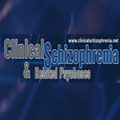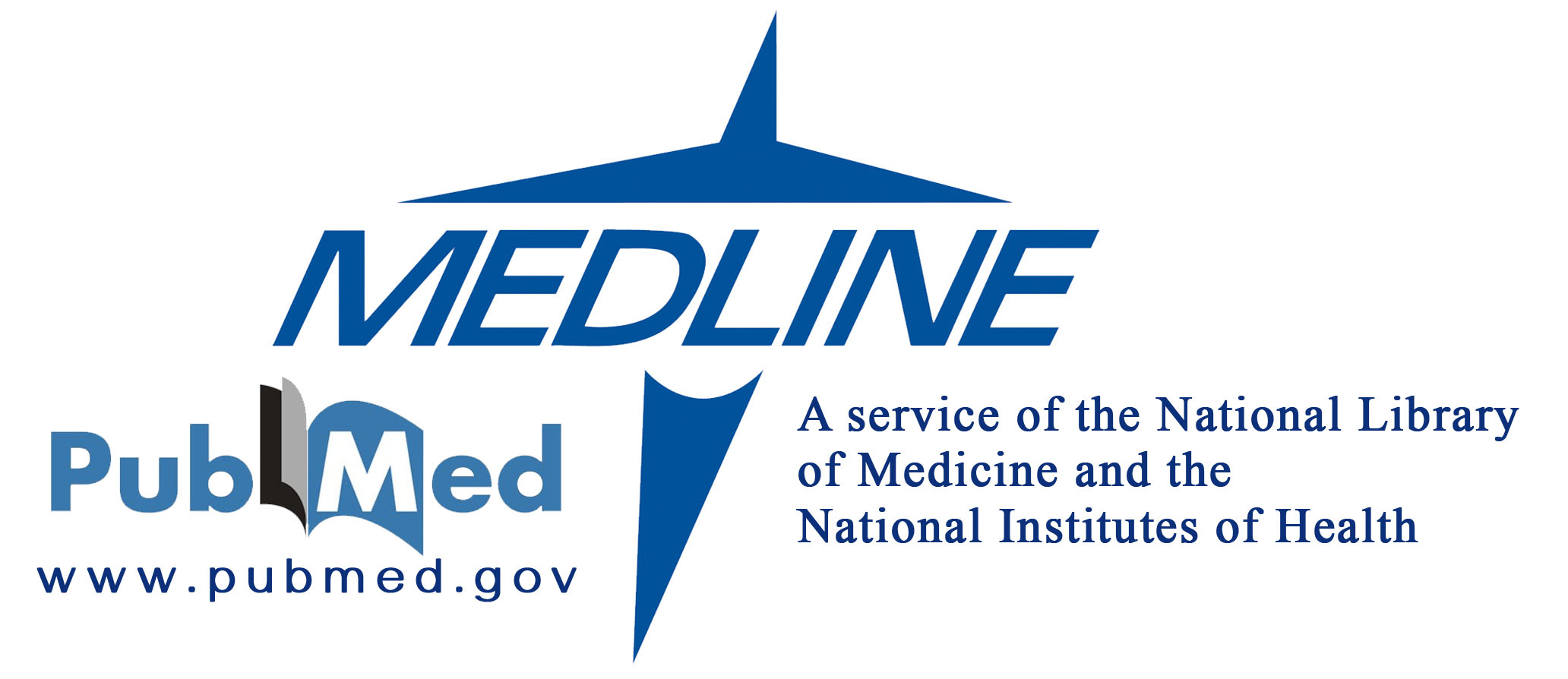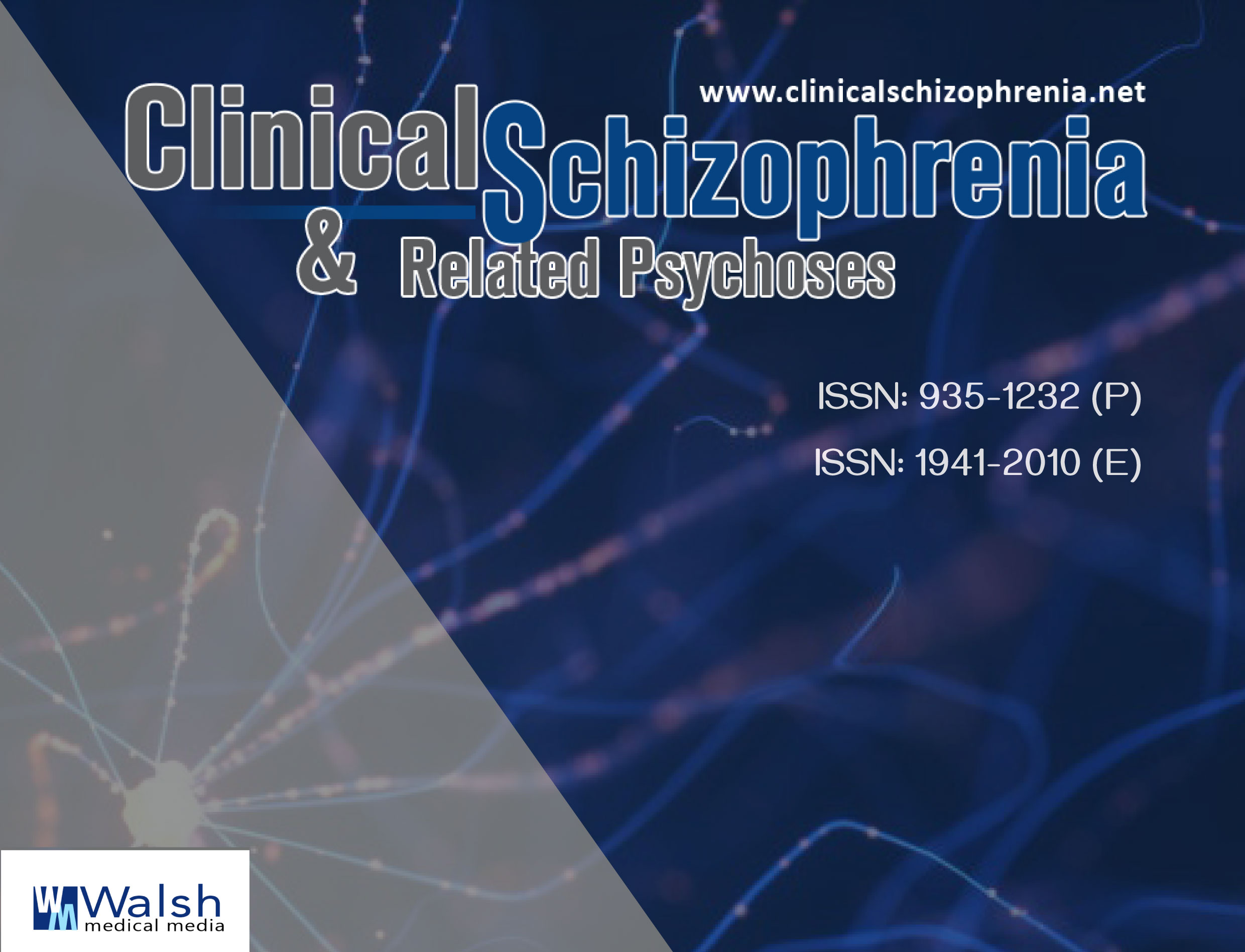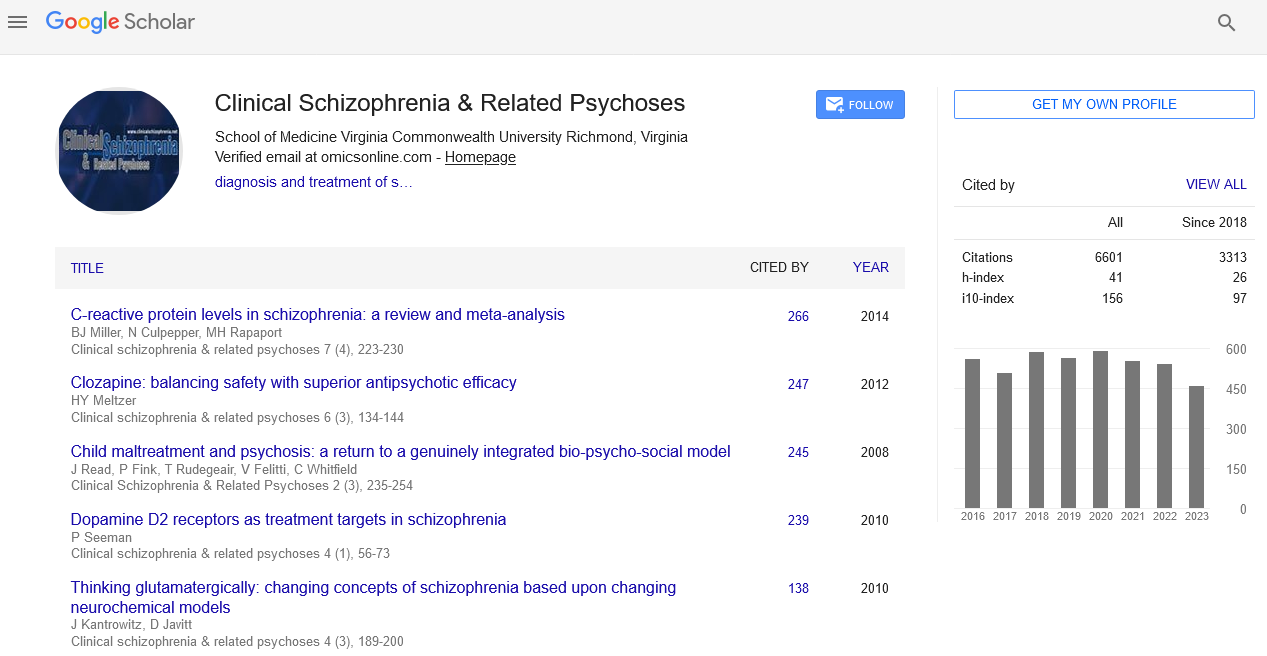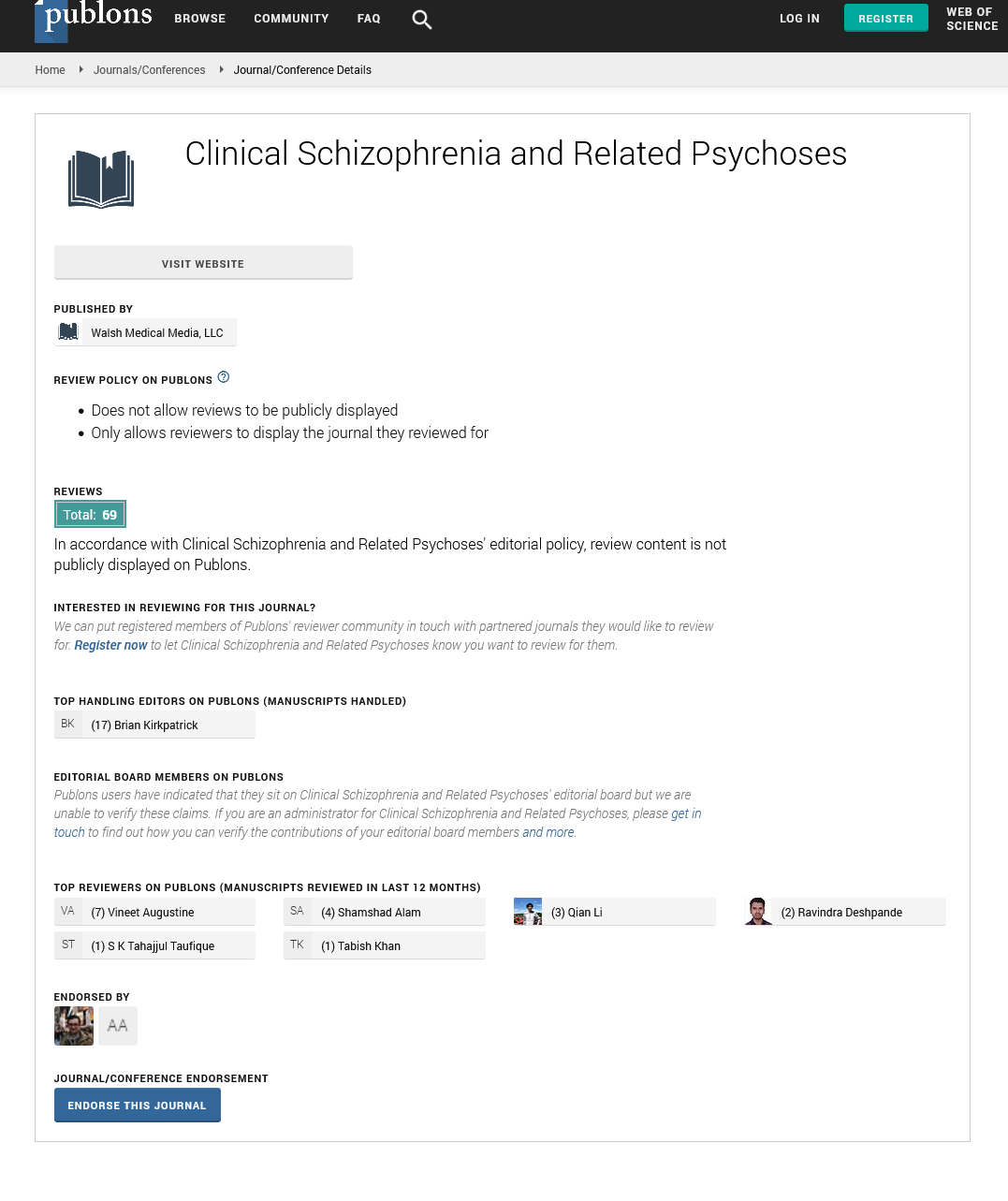Research Article - Clinical Schizophrenia & Related Psychoses ( 2022) Volume 0, Issue 0
Bhupendra Singh, Department of Psychiatry, Institute of Mental Health (IMH), Pandit Bhagwat Dayal Sharma Post Graduate Institute of Medical Sciences, Haryana, India, Email: 33bhupendrasingh@gmail.com
Received: 19-May-2022 Editor assigned: 23-May-2022 Reviewed: 06-Jun-2022 Revised: 13-Jun-2022 Published: 21-Jun-2022, DOI: 10.3371/CSRP. MYAR.062122
Abstract
Background: The prevalence of psychiatric disorders in medical schools has been continuously increasing, escalating the use of antidepressants. Despite this, a huge treatment gap persists, especially in traditional societies like India, where stigma towards mental illnesses is highly prevalent. Prejudice persists not only in the general population but also among medical students. Research on stigmatizing attitudes among medical students towards depression and its treatment is crucial to ensure timely interventions and promote mental wellbeing. Hence this paper aims to assess stigmatizing attitude towards depression and its treatment among medical and paramedical students in a tertiary care teaching hospital.
Material and Methods: Google form was created and data collection was conducted through online platforms that included 474 students. All participants were assessed for depression, anxiety and stress symptoms, antidepressants awareness, and stigmatizing attitude towards depression and antidepressants by using a 21 item Depression Anxiety Stress Scale (DASS) and 28-item self-administered Depression and antidepressants knowledge and awareness scale (DAKAS) respectively.
Results: In study population the mean age was of medical students was 22.07 (SD-3.17) years and paramedical students was 25.88 (SD-5.03) respectively. 80.4 % of participants were medical students and 19.8 % of participants were paramedical students. 12.2% of the medical students and 10.2% of paramedical students reported depression. 44.4% of the student’s strongly agreed that happiness achieved through anti-depressants is fake happiness, while 51.9% strongly agreed that antidepressants are addictive.
Conclusion: The findings suggest that awareness and proper knowledge about mental health are lacking among medical profession students and proper measures like medical education must be arranged to promote awareness.
Keywords
Stigma • Depression and antidepressant awareness • Medical students • Depression
Introduction
In India, the prevalence of psychiatric disorders is increasing alarmingly, affecting about 197.3 million people in 2017, out of which 45.7 million people had depressive disorder. The contribution of mental disorders to the total DALYs in India increased from 2.5% in 1990 to 4.7% in 2017 and depressive disorders contributed the most to the total mental disorders DALYs, followed by anxiety disorders [1]. With the rise in mental disorders, the use of antidepressants is also increasing [2]. Despite an increase in treatment options, huge treatment gaps persist, which range between 70% and 92% for different mental disorders in India, and many who seek help fail to adhere to treatment [3]. Help-seeking behavior is much affected by the perceptions and beliefs that people have towards mental health [4]. The persistent preconception and stigmatizing attitude of self and public intercept patient’s appropriate treatment [5,6].
Medical students are a high-risk group for depression and anxiety and only a minority of them seek treatment [7]. This raises further concern not only about their subsequent episodes and morbidity but also because they are future medical doctors. Health professionals’ stigmatic attitudes towards mental illnesses and treatments have been shown to affect their everyday work, successively impacting their patient’s health [8]. Hence having information about medical students’ attitudes towards psychiatric disorder and their treatment before entering the medical field and surveying the efficacy of medical education in upgrading their perception towards mental illnesses, is of crucial importance to patient care. Previous studies are focused on patients and caregiver’s attitude and stigma for treatment. Many studies including Doctors and Health professionals had been conducted to analyze the prevalence of depression and perceptions and awareness regarding depression, however, there is a dearth of studies emphasizing the knowledge about antidepressants and stigma towards antidepressant use. To our knowledge, there is not such a study on Indian society.
Taking into account all these factors, this study aims to assess the awareness of antidepressants and stigmatizing attitudes towards depression and antidepressant use among medical and paramedical students from a Health university of North India.
Materials and Methods
The study was conducted in Pt.B.D.Sharma Post Graduate Institute of Medical Sciences Rohtak. A cross-sectional design was employed and a Web sampling technique was used to recruit participants. Ethical approval has been taken from the ethics committee of the university.
Inclusion criteria were students of any gender pursuing any undergraduate or post graduate course. The students pursuing MD or DPM in Psychiatry, Psychiatric Social Work or Clinical Psychology were excluded. Any self-reported case of depressive disorder or students with a significant negative life event like the death of family members or friends in last 1 month were also excluded. The socio-demographic data were collected using questions like age, gender, family type, history of physical or psychiatric illness.
Depression Anxiety Stress Scale (DASS) was used for assessing depression, anxiety, and stress among students [9]. It is a set of three self- report scales designed to measure the emotional states of depression, anxiety, and stress. Each of the three DASS-21 scales contains 7 items, divided into subscales with similar content. The depression scale assesses dysphoria, hopelessness, devaluation of life, self-deprecation, lack of interest or involvement, anhedonia, and inertia. The anxiety scale assesses autonomic arousal, skeletal muscle effects, situational anxiety, and subjective experience of anxious affect. The stress scale assesses difficulty relaxing, nervous arousal, and being easily upset, irritable or over-reactive, and impatient. Scores for depression, anxiety, and stress are calculated by summing the scores for the relevant items.
For assessing stigma and general knowledge on depression and antidepressants, Depression and Antidepressant Knowledge and Awareness Scale (DAKAS) were used [10]. The scale developed by Oguz Kaan Yalcinkaya in 2021 consists of 2 sections with 17 questions and 11 questions in Section-A and Section-B respectively. The Section-A using a scale approach, addresses the stigma aspect, where participants state their views using the phrases such as ‘strongly agree/agree/neutral/disagree/ strongly disagree’. The overall stigma score is calculated by combining the first 14 questions. The last 2 questions were used to assess the participant’s opinion and were not found to be a good score of stigma, hence excluded from the total score. Section-B evaluates participants’ knowledge on depression and antidepressants, using phrases like ‘yes/unsure/no’.
Google form consisting of 44 questions was created which included basic socio-demographic details starting from the informed consent and items of the two questionnaires used in the study. All three sub-parts were merged in the one Google form with separators for the convenience of the participants. Google forms were distributed using social networking platforms (Email/WhatsApp/telegram) with the request for further circulation. Three months were kept for data collection and 506 responses were received. 474 participants who met the study criteria were included. Data so obtained was analyzed using SPSS software version 16.0.
Results
The mean age of the study sample of medical students was 22.07 (SD- 3.17) years and paramedical students was 25.88 (SD-5.03) respectively. Females (79.4%) outnumbered the males (20.4%) in both the study group. More than half of the participants were Hindu by religion (64.2%), came from extended/joint family (60.8%) and lower socioeconomic status (55%). About 12.2% of medical students and 10.2% of para-medical students reported having depressive symptoms. Among medical students 16.8 % reported anxiety symptoms and 2.93% reported stress symptoms. 11.2% of the paramedical students reported anxiety symptoms and 1.02 % reported stress symptoms. The socio-demographic profile and clinical characteristics of the study sample is depicted in Table 1.
| Variable | Medical students | Paramedical students |
|---|---|---|
| (N=376)/Frequency (%) | (N=98)/Frequency (%) | |
| Age (Mean ± SD), years | 22.07 (3.17) | 25.88 (5.03) |
| Male Female |
77 (20.6%) 298 (79.4%) |
20 (20.4%) 78 (79.6%) |
| Family types Nuclear Joint Separated |
||
| 273 (72.6%) 94 (25.0%) 9 (2.4%) |
61 (62.2%) 29 (29.6%) 8 (8.2%) |
|
| Having a physical disease Yes No |
57(15.2%) 319 (84.8%) |
12 (12.3%) 86 (87.7%) |
| Having a psychiatric disease Yes No Yes, (Don’t need treatment) Don’t want to answer |
25(6.6%) 317 (84.3%) 22 (5.9%) 12 (3.2%) |
7(7.1%) 88 (89.8%) 2 (2.1%) 1 (1.0 %) |
| Severity of depressive, anxiety and stress symptoms as assessed on DASS* Severity grade of depressive Severity grade of anxiety symptoms Severity grade of stress symptoms The overall Stigma score (Mean ± SD) |
46 (12.2%) 63(16.8%) 11 (2.9%) 37.95 (8.33) |
10 (10.2%) 11 (11.2%) 1 (1.0%) 38.87 (8.63) |
Note: *Depression Anxiety Stress Scale, SD=Standard Deviation, N= Number. |
||
The overall stigma score of the medical students was 37.95 (8.33) and 38.87 (8.63) of the paramedical students. The results of the stigma- based statements in the section A show the high prevalence of stigmatizing attitudes regarding depression in both groups. The results of the knowledge- based statements in Section B show that poor knowledge regarding antidepressants persists in a significant proportion of the study participants (Table 2).
| S. no | Section A Medical students (N=381), Paramedical students (N=93) |
Strongly agree+agree | Neutral | Strongly disagree+disagree |
|---|---|---|---|---|
| 1 | Depression is a disease and antidepressant usage is normal | |||
| Medical | 266 (70.7%) | 52 (13.8%) | 58 (15.5%) | |
| Paramedical | 63 (64.3%) | 18 (18.4%) | 17 (17.3%) | |
| 2 | Happiness through antidepressant usage are fake happiness | |||
| Medical | 167 (44.4%) | 112(29.8%) | 97 (25.8%) | |
| Paramedical | 40 (40.8%) | 25 (25.5%) | 33 (33.7%) | |
| 3 | I think the people who use antidepressants are not strong enough | |||
| Medical | 78 (20.7%) | 56 (14.9%) | 242 (64.4 %) | |
| Paramedical | 17 (17.3%) | 18 (18.4%) | 63 (64.3%) | |
| 4 | When/If I used antidepressants I shared/would share it with my family | |||
| Medical | 266 (70.7%) | 59 (15.7%) | 51(13.6%) | |
| Paramedical | 74 (75.5%) | 10 (10.2%) | 14 (14.3%) | |
| 5 | When/If I used antidepressants I shared/would share it with my friends Medical | 244 (64.9%) | 84 (22.3%) | 48 (12.8%) |
| Paramedical | 55 (56.1%) | 25 (25.5%) | 18 (18.4%) | |
| 6 | Public stigma has a harmful effect on antidepressant drug continuance | |||
| Medical | 318 (84.6%) | 47 (12.5%) | 11 (2.9%) | |
| Paramedical | 75 (76.5%) | 13 (13.3%) | 10 (10.2%) | |
| 7 | Antidepressants are addictive | |||
| Medical | 195 (51.9%) | 126 (33.5%) | 55 (14.6%) | |
| Paramedical | 50 (51%) | 18 (18.4%) | 30 (30.6%) | |
| 8 | Antidepressants change the personality of the user | |||
| Medical | 151 (40.2%) | 143 (38%) | 82 (21.8%) | |
| Paramedical | 46 (46.9%) | 27 (27.6%) | 25 (25.5%) | |
| 9 | Psychological problems can be solved by will-power | |||
| Medical | 296 (78.7%) | 57 (15.2%) | 23 (6.1%) | |
| Paramedical | 75 (76.5%) | 15 (15.3%) | 8 (8.2%) | |
| 10 | Knowing somebody I know is using antidepressants would make me nervous | |||
| Medical | 78 (20.7%) | 83 (22.1%) | 215 (57.2%) | |
| Paramedical | 20 (20.4%) | 23 (32.5%) | 55 (56.1%) | |
| 11 | Knowing somebody I know is seeing a psychiatrist would make me nervous | |||
| Medical | 64 (17%) | 71 (18.9%) | 241 (64.1%) | |
| Paramedical | 18 (18.4%) | 23 (23.5%) | 57 (58.2 %) | |
| 12 | Depression can be treated solely by psychotherapy | |||
| Medical | 82 (21.8%) | 122(32.4%) | 172 (45.7%) | |
| Paramedical | 28 (28.6%) | 24 (24.5%) | 46 (46.9%) | |
| 13 | I would be anxious to share that I am seeing a psychiatrist with my family | |||
| Medical | 115 (30.6%) | 91 (24.2%) | 170 (45.2%) | |
| Paramedical | 28 (28.6%) | 21 (21.4%) | 48 (49%) | |
| 14 | I would be anxious to share that I am seeing a psychiatrist with my friends | |||
| Medical | 89 (23.7%) | 104(27.7%) | 183 (48.6%) | |
| Paramedical | 30 (30.6%) | 25 (25.5%) | 43 (43.9%) | |
| 15 | Antidepressants make people numb | |||
| Medical | 75 (19.9%) | 141(37.5%) | 160 (42.6%) | |
| Paramedical | 29 (29.6%) | 33 (33.7%) | 36 (36.7%) | |
| 16 | I think people usually unnecessarily use the phrase ‘I am in depression’ | |||
| Medical | 212 (56.4%) | 88 (53.4%) | 76 (20.2%) | |
| Paramedical’ | 52 (53.1%) | 22 (22.4%) | 24 (24.5%) | |
| 17 | I think increased prevalence it is caused by increased awareness on depression | |||
| Medical | 172 (45.5%) | 103(27.4%) | 101 (26.9%) | |
| Paramedical | 34 (34.7%) | 23 (23.5%) | 41 (41.8%) | |
| S.no | Section B Medical students (N=381), Paramedical students (N=93) |
Yes | Unsure | No |
| 1 | Depression has genetic elements | |||
| Medical | 170 (45.2 %) | 112 (29.8%) | 94 (25 %) | |
| Paramedical | 30 (30.6%) | 24 (24.5%) | 44 (44.9%) | |
| 2 | Antidepressants lower the sexual drive | |||
| Medical | 115 (30.6%) | 198 (52.7%) | 63 (16.8%) | |
| Paramedical | 42 (42.9%) | 35 (35.7%) | 21 (21.4%) | |
| 3 | Antidepressant usage is more common in females | |||
| Medical | 137 (36.4%) | 168 (44.7%) | 71 (18.9%) | |
| Paramedical | 44 (44.9%) | 30 (30.6%) | 24 (24.5%) | |
| 4 | Antidepressants prevent formation of clear thoughts | |||
| Medical | 111 (29.5%) | 154 (41%) | 111(29.5%) | |
| Paramedical | 32 (32.7%) | 26 (26.5%) | 40 (40.8%) | |
| 5 | Antidepressants are only used for the treatment of depression | |||
| Medical | 66 (17.6%) | 93 (24.7%) | 217(57.7%) | |
| Paramedical | 41 (41.8%) | 25 (25.5%) | 32 (32.7%) | |
| 6 | Antidepressants have negative effects on creativity | |||
| Medical | 87 (23.1%) | 142 (37.8%) | 147(39.1%) | |
| Paramedical | 17 (17.3%) | 32 (32.7%) | 49 (50%) | |
| 7 | Antidepressants are drugs that require continuous use | |||
| Medical | 150 (39.9%) | 100 (26.6%) | 126(33.5%) | |
| Paramedical | 34 (34.7%) | 23 (23.5%) | 41 (41.8%) | |
| 8 | Antidepressants show their effects after a short period | |||
| Medical | 188 (50%) | 126 (33.5%) | 62 (16.5%) | |
| Paramedical | 54 (55.1%) | 34 (34.7%) | 10 (10.2%) | |
| 9 | All antidepressants aim to increase levels of serotonin | |||
| Medical | 125 (33.2%) | 134 (35.6%) | 117(31.2%) | |
| Paramedical | 42 (42.9%) | 36 (36.7%) | 20 (20.4%) | |
| 10 | Antidepressants can’t be purchased without a prescription | |||
| Medical | 286 (76.1%) | 48 (12.8%) | 42 (11.2%) | |
| Paramedical | 72 (73.5%) | 7 (7.1%) | 19 (19.4%) | |
| 11 | There is no need for a doctor to consult for the use of sedatives | |||
| Medical | 46 (12.2%) | 81 (21.5%) | 249(66.2%) | |
| Paramedical | 14 (14.3%) | 14 (14.3%) | 70 (71.4%) | |
| 12 | Antidepressants can’t be used in ages 0-6 | |||
| Medical | 181 (48.1%) | 141 (37.5%) | 54 (14.4%) | |
| Paramedical | 44 (44.9%) | 36 (36.7%) | 18 (18.4%) |
In regression analysis, the predictor for overall stigma score was depressive symptoms, anxiety symptoms, gender and stream/profession (medical and paramedical) with a negative predictor effect shown in Table 3.
| Predictors | B | Std. Error | Beta | t | Sig. |
|---|---|---|---|---|---|
| Depressive symptoms | -0.035 | 0.080 | -0.035 | -0.439 | 0.660 |
| Anxiety symptoms | -0.032 | 0.097 | -0.029 | -0.333 | 0.738 |
| Stress symptoms | 0.028 | 0.099 | 0.028 | 0.285 | 0.775 |
| Age | 0.079 | 0.058 | 0.075 | 1.359 | 0.174 |
| Gender | -0.714 | 0.494 | -0.069 | -1.443 | 0.149 |
| Education | 0.245 | 0.098 | 0.186 | 2.488 | 0.013 |
| Residence/family type | 0.133 | 0.224 | 0.027 | 0.593 | 0.553 |
| Stream/profession | -1.317 | 0.729 | -0.127 | -1.806 | 0.071 |
Note: p value<0.60. |
|||||
Discussion
This study measured the awareness of antidepressants and stigmatizing attitudes towards depression and antidepressant use among medical and paramedical students. Stigmatization of mental health disorders can lead to social exclusion and bigotry, adversely affect the course of the illness, and impede treatment options [11,12]. The stigmatizing views of healthcare workers on these topics are pivotal, given their role in patients’ welfare [8]. Attitude plays important role to take decision about any action and doctor’s view for mental health and related problems has been reported negatives in studies [13]. It is therefore indispensable to evaluate the stigmatizing views of medical students on these topics.
In our study, it was seen that a majority of the participants (approximately 51% of both the medical and paramedical students) believed that antidepressants are addictive and depression can be solely treated by willpower (78% medical students and 75% paramedical students). But at the same time, a majority of the participants also believed that depression is a disease and anti-depressant usage is normal. This finding suggests that both positive, as well as negative impression regarding depression exists in health care profession students. This finding is in contrast to a study conducted on the general population where mostly negative views were present against depression [14]. It has been seen that people with higher education have a less stigmatizing view regarding mental illness which might explain the prevalence of mixed attitudes in our study. Also in this study since students of all the years were included, a possible explanation might be a less stigmatizing attitude among senior students compared to juniors. A study conducted in the Turkish population saw that, compared to first-year medical graduate students, sixth-year students had more knowledge and less stigmatizing attitude towards depression and antidepressants indicating that medical education is generally effective in reducing the stigmatization related to depression and antidepressants [10].
A majority of the participants in the study, who self-reported for having a psychiatric illness, claimed that they do not need treatment, which also explains their stigmatizing attitude towards antidepressants as seen in the DAKAS scale. A significant proportion of medical and paramedical students believed that antidepressants lower sexual drive and prevent the formation of clear thoughts. Such type of beliefs not only impacts their treatment or treatment of their patients in the future but also impacts their future career choice. It has been seen in previous studies that negative opinion is dominant among medical students regarding psychiatry and mental illness which leads to low interest in choosing psychiatry as a career choice [15]. In countries like India where there is already a dearth of mental health professionals, a further decrease might prove to be detrimental [16].
One of the limitations of the study was that the follow-up method was not used, as it would have been time-consuming, and also it is not possible to find the same participants over a while. The other limitations are that since it was conducted online, the study was limited to only those who had access to a smartphone device, hence the participants may not be representative of students from every stratum. Although we had committed sincere attempts to circulate the questionnaire widely on social media platforms, the response rate had been very less, as it was a volunteer-based survey. About 3/4th of the participants were females, which suggests that the survey did not have the desired snowballing effect, as much as it was expected. Since there is no specific scale to measure knowledge and attitude towards antidepressants, we used the DAKAS scale which had been used in only one study previously and is not validated. A comparative study would have been more informative, but since there is a huge discrepancy between the numbers in both the groups and the majority of the participants being female, which could have led to a biased comparison, a cross-sectional study was carried out. Because of these aforesaid constraints, the findings may not be generalizable to every stratum of medical students.
Despite the limitations, our study gives an idea about the stigmatizing attitude and perception healthcare profession students have regarding depression and antidepressants, and the findings of the study will help in formulating a proper educational curriculum in the future. Understanding the various types of stigmatizing attitudes will also help in delivering appropriate psychoeducational therapy.
Conclusion
The Health professionals should be emphatically aware of the impact their perceptions and eventual judgment about mental health patients and illnesses can have in their caring role. Enhanced knowledge of mental health problems, can lead to lower levels of stigmatization. Proper education must begin during the student phase to curtail the negative impact, stigmatizing attitudes may have on their future patient care. The medical curriculum must give its students the notion of seeing mental health problems as an illness, their victims as patients, and seeing antidepressants as a treatment method. Other than regular medical curriculum, public education programs, and awareness campaigns might help in changing stigmatizing views.
References
- India State-Level Disease Burden Initiative Mental Disorders Collaborators. "The Burden of Mental Disorders across the States of India: The Global Burden of Disease Study 1990-2017." Lancet Psychiatry 7 (2020):148-61.
[Crossref] [Google scholar] [Pubmed]
- Pratt, Laura A., Debra J. Brody and Qiuping Gu. "Antidepressant Use among Persons Aged 12 and Over: United States, 2011-2014." NCHS Data Brief 283 (2017):1-8.
[Google scholar] [Pubmed]
- Murthy, R. Srinivasa. "National Mental Health Survey of India 2015–2016." Indian J Psychiatry 59 (2017): 21.
[Crossref] [Google scholar] [Pubmed]
- Kate, Natasha, Sandeep Grover, Parmanand Kulhara and Ritu Nehra. "Supernatural Beliefs, Aetiological Models and Help Seeking Behaviour in Patients with Schizophrenia." Ind Psychiatry J 21 (2012): 49-54.
[Crossref] [Google scholar] [Pubmed]
- Angermeyer, Matthias C., Andreas Holzinger and Herbert Matschinger. "Mental Health Literacy and Attitude Towards People with Mental Illness: A Trend Analysis Based on Population Surveys in the Eastern Part of Germany." Eur Psychiatry 24 (2009): 225-32.
[Crossref] [Google scholar] [Pubmed]
- Barney, Lisa J., Kathleen M. Griffiths, Helen Christensen and Anthony F. Jorm. "Exploring the Nature of Stigmatising Beliefs about Depression and Help-Seeking: Implications for Reducing Stigma." BMC Public Health 9 (2009): 1-11.
[Crossref] [Google scholar] [Pubmed]
- Rotenstein, Lisa S., Marco A. Ramos, Matthew Torre and J. Bradley Segal, et al. "Prevalence of Depression, Depressive Symptoms, and Suicidal Ideation among Medical Students: A Systematic Review and Meta-Analysis." Jama 316 (2016): 2214-36.
[Crossref] [Google scholar] [Pubmed]
- Saridi, Maria, Aikaterini Kordosi, Aikaterini Toska and Lily Evangelia Peppou, et al. "Attitudes of Health Professionals towards the Stigma Surrounding Depression in Times of Economic Crisis." Int J Soc Psychiatry 63 (2017): 115-25.
[Crossref] [Google scholar] [Pubmed]
- Lovibond, Peter F and Sydney H. Lovibond. "The Structure of Negative Emotional States: Comparison of the Depression Anxiety Stress Scales (DASS) with the Beck Depression and Anxiety Inventories." Behav Res Ther 33 (1995): 335-43.
[Crossref] [Google scholar] [Pubmed]
- Nalçakan, Ayşe Derin, Ezgi Aysu Şahin, Oguz Kaan Yalcinkaya and Sertac Ak. "Antidepressant Awareness and Stigmatizing Attitudes Toward Depression and Antidepressants, a Comparison between First and Sixth-Year Medical Students." Int J Soc Psychiatry 68 (2022): 316-23.
[Crossref] [Google scholar] [Pubmed]
- Babić, Dragan, Romana Babić, Ivan Vasilj and Esmina Avdibegović. "Stigmatization of Mentally Ill Patients through Media." Psychiatria Danubina 29 (2017): 885-9.
[Google scholar] [Pubmed]
- World Health Organization. Policies and Practices for Mental Health in Europe: Meeting the Challenges. Geneva: World Health Organization, Switzerland, (2008).
- Challapallisri, Vaishnavi and Lloyd V. Dempster. "Attitude of Doctors Towards Mentally Ill in Hyderabad, India: Results of a Prospective Survey." Indian J Psychiatry 57 (2015): 190-5.
[Crossref] [Google scholar] [Pubmed]
- Cook, Trevor M. and JianLi Wang. "Descriptive Epidemiology of Stigma against Depression in a General Population Sample in Alberta." BMC Psychiatry 10 (2010): 1-11.
[Crossref] [Google scholar] [Pubmed]
- Hofmann, Marzellus, Sigrid Harendza, Jelka Meyer and Anna Drabik, et al. "Effect of Medical Education on Students’ Attitudes Toward Psychiatry and Individuals with Mental Disorders." Acad Psychiatry 37 (2013): 380-4.
[Crossref] [Google scholar] [Pubmed]
- Gururaj, G., Mathew Varghese, V. Benegal and G. NIMHANS Rao, et al. National Mental Health Survey of India, 2015-16: Summary. Bengaluru: National Institute of Mental Health and Neurosciences, India, (2016).
Citation: Malik, Yogender Kumar, Adwitiya Ray and Bhupendra Singh. “Assessment of Stigmatizing Attitude towards Depression and its Treatment among Medical and Paramedical Students: An Exploratory Study.” Clin Schizophr Relat Psychoses 16S (2022). Doi: 10.3371/CSRP. MYAR.062122.
Copyright: © 2022 Malik YK, et al. This is an open-access article distributed under the terms of the Creative Commons Attribution License, which permits unrestricted use, distribution, and reproduction in any medium, provided the original author and source are credited. This is an open access article distributed under the terms of the Creative Commons Attribution License, which permits unrestricted use, distribution, and reproduction in any medium, provided the original work is properly cited.
